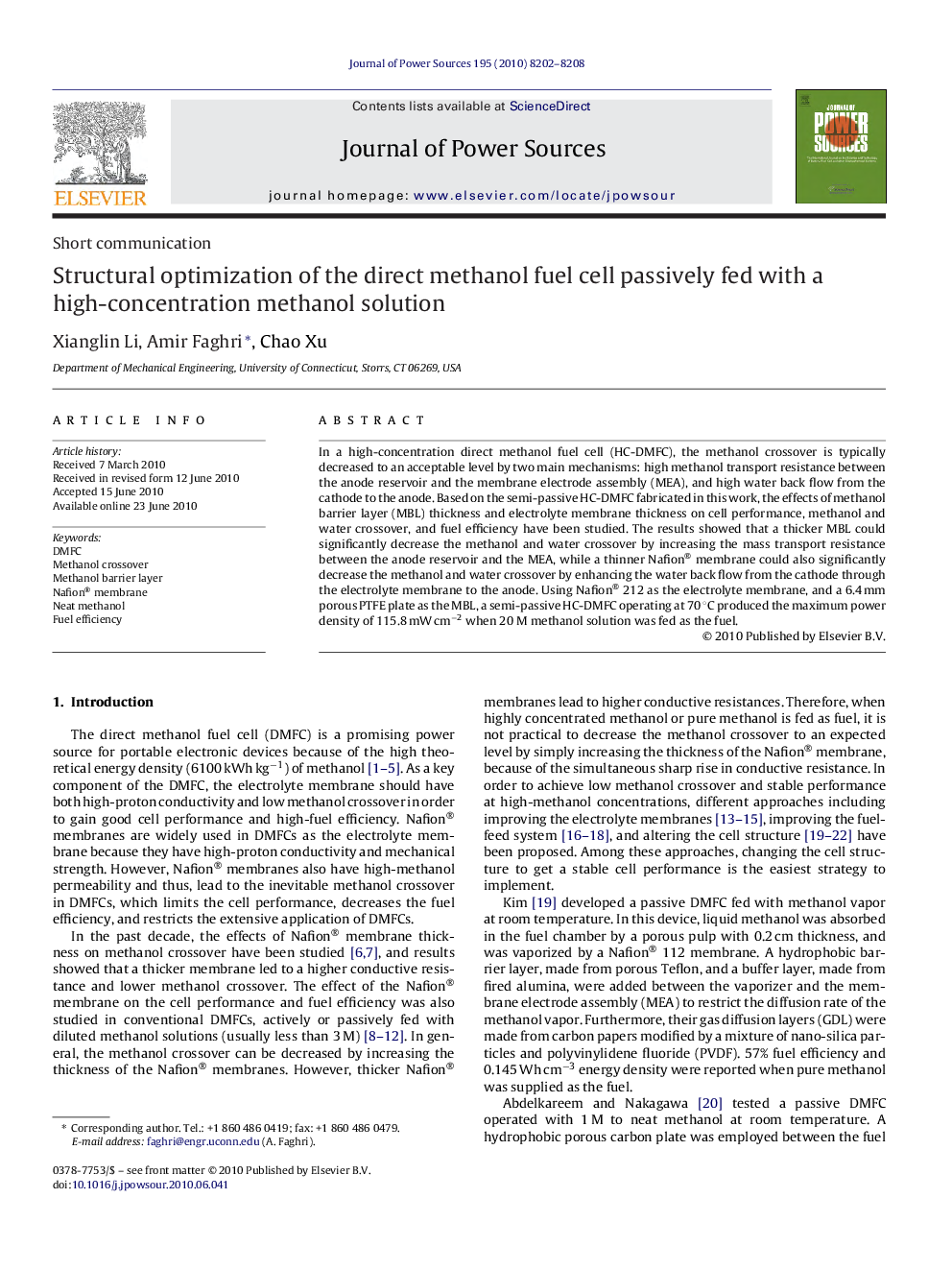| Article ID | Journal | Published Year | Pages | File Type |
|---|---|---|---|---|
| 1293675 | Journal of Power Sources | 2010 | 7 Pages |
In a high-concentration direct methanol fuel cell (HC-DMFC), the methanol crossover is typically decreased to an acceptable level by two main mechanisms: high methanol transport resistance between the anode reservoir and the membrane electrode assembly (MEA), and high water back flow from the cathode to the anode. Based on the semi-passive HC-DMFC fabricated in this work, the effects of methanol barrier layer (MBL) thickness and electrolyte membrane thickness on cell performance, methanol and water crossover, and fuel efficiency have been studied. The results showed that a thicker MBL could significantly decrease the methanol and water crossover by increasing the mass transport resistance between the anode reservoir and the MEA, while a thinner Nafion® membrane could also significantly decrease the methanol and water crossover by enhancing the water back flow from the cathode through the electrolyte membrane to the anode. Using Nafion® 212 as the electrolyte membrane, and a 6.4 mm porous PTFE plate as the MBL, a semi-passive HC-DMFC operating at 70 °C produced the maximum power density of 115.8 mW cm−2 when 20 M methanol solution was fed as the fuel.
